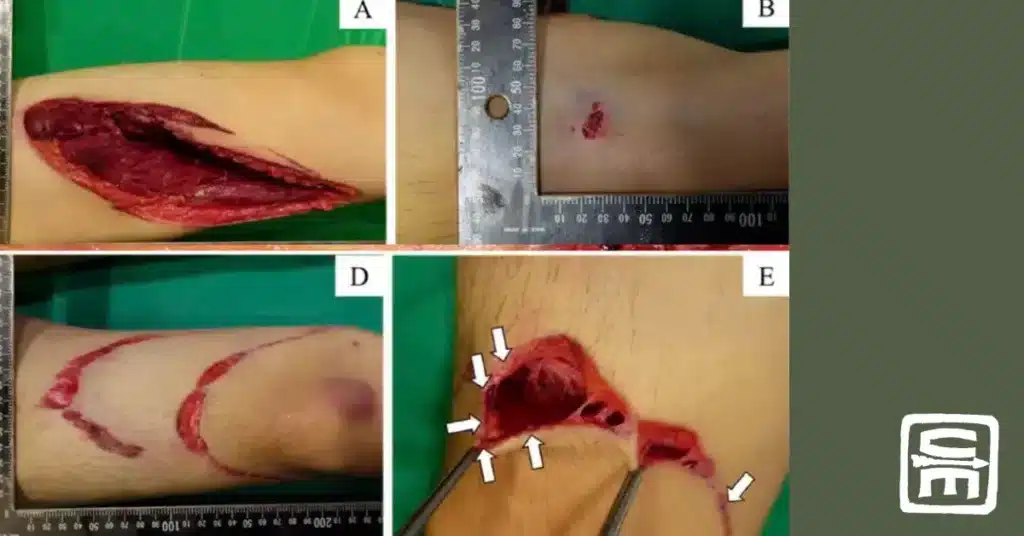

If the water jet is a bit further from the skin, penetration can be more of a blast pattern. Fatal massive hemorrhage with extremity injuries from artery and / or vein disruption has occurred. Penetrating torso injury with internal organ damage also occurs. Often, these high-pressure water jets are used in enclosed spaces, further complicating casualty evaluation, immediate hemorrhage control, and casualty extraction. Ultimately, TECC guidelines on the care of blast and penetrating trauma casualties while still in a high-risk environment seem well suited to guide the management of these casualties.
🕖 Reading Time, 4 minutes
High-pressure water jet units are capable of 10,000 to 40,000 psi. Small penetration wounds with extensive internal damage often characterize injuries associated with their use. Water volumes of up to 3.8 liters per second can result in a large pressure transfer into the wound.1 “Depending on the surface area of the nozzle, fluid velocity can mimic those of military rifles…”2 As the energy of the water jet dissipates, it causes a “blast pattern” of injury from the pressure wave rather than just direct penetration.2
In 2021, a fatal injury involving a high-pressure water jet unit occurred. Unfortunately, an adult male using the water unit was found dead at his construction site, having bled out of a femoral artery and vein complete transection in his left thigh.


In a review of twenty cases of injury by water jets1 through the year 2000:
Lastly, there have been cases of inadvertent penetration into the abdomen resutling in a “large amount of blood” in the abdomen at surgery. From 1966 until 2014, there were ten published cases of similar penetrating abdominal injury. Accidents occurred secondary to hose blockage, five cases of misdirected spraying or a loose grip on the device, device malfunction, and one case of user error. 80% had damage to at least one intraabdominal organ.2 Bowel and colon perforations frequently occur.1

1Tejero-Trujeque R. High-pressure water jet injuries: a surgical emergency. J Wound Care. 2000 Apr;9(4):175-9. doi: 10.12968/jowc.2000.9.4.25976. PMID: 11933301.
2Magneson F, O’Rear J. High pressure water jet injury to the abdomen: A case report and literature review. Occupational Med and Health Affairs. 2014.
3Ishigami A, Iwahashi Y, Ishida Y, Nosaka M, Kuninaka Y, Yamamoto H, Hashizume Y, Kondo T. Fatal injury by high-pressure water jet unit – A case report. J Forensic Leg Med. 2021 Nov;84:102270. doi: 10.1016/j.jflm.2021.102270. Epub 2021 Oct 28. PMID: 34742124.
4Radojevic N, Radnic B, Curovic I. Fatal Penetrating Injuries Sustained by High-pressure Water Jet Unit. J Forensic Sci. 2015 Nov;60(6):1652-3. doi: 10.1111/1556-4029.12861. Epub 2015 Aug 6. PMID: 26250721.